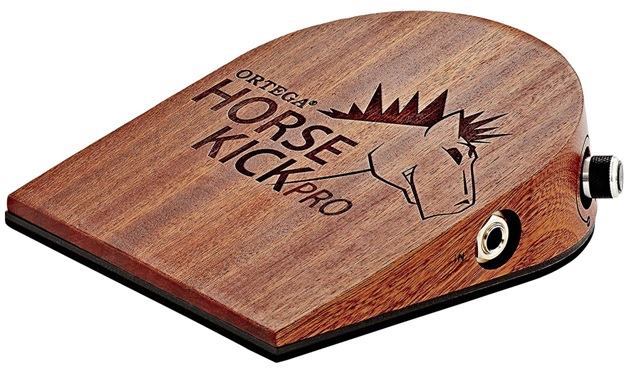Stomp Boxes, which are also called guitar effects pedals are equipment’s used by the music artists to change the sound effects of their guitars. Stomp boxes named because of the “stomping” action need to make the effect work. While the pedals are off, you are playing with the guitars clean (unaffected signal) sound coming out of your amp. When you step on it to turn it on, the signal that goes to the pedals is changed creating the desired effect.
Stomp boxes named because of the “stomping” action need to make the effect work. While the pedals are off, you are playing with the guitars clean (unaffected signal) sound coming out of your amp. When you step on it to turn it on, the signal that goes to the pedals is changed creating the desired effect.
How to Make Stomp box?
A typical arrangement for a stomp box will consist of a metal box covering the circuitry unit while on top of it there is a footswitch to turn the effect on or bypass it alongside the rotary controls which are put into place to alter the effects of the sound.
On one side of the stomp box unit, you will find an input jack port for the signals from your guitar while the output jack on the other end will pass out the signal from the unit and onto the amp or another unit.
Stompboxes can be chained one after the other in a manner such that the output from one unit leads into another stompbox input with the last output from the chain going into your amp.
As these stomp box units usually incorporate one type of effects at a time which ranges from the one box for the distortion, one for chorus and one for compression and therefore you can use this method to mix different effects into your guitar sound, layering up or reducing the number of effects by switching the boxes on or off through their footswitches.
Building up a collection of good quality stomp boxes and using them this way is something that is highly endorsed by many guitar players, as they can clearly select what they want ranging from the unit by unit, giving them the total control on the shaping of their sounds. However, this is not the way to go, but more of a coveted way of generating sound effects.
The electric guitarists are increasingly making use of Stomp boxes to expand and alter their sound effects. There are various types of effects in the market, such as signal conditioners which offer effects such as a wah-wah, distortion, and compression.
However, it is crucial to make sure that your guitar effects pedals or Stomp boxes are well set up in order to get the full range of benefits. Technically, there is no right way to devise a stompbox board as it usually depends on the sound that the guitarist is trying to achieve.
But the order in which these stomp boxes are aligned has to be carefully considered. For instance, placing the reverb pedal in front of a distortion unit can result in a pleasant effect but also setting it up the other way round may not be quite so attractive.
So guitarists need to consider factors such as these in their minds when connecting their guitar effects pedals. Some arrangements will give nice sounds while others will not. This means that guitarists especially those who love experimenting with guitar effects and making the most of the unusual noises could benefit from trying out lots of different variations.
Stomp Box setup
The most common set-up is putting a signal conditioner first, then modulation and time-based effects, followed by ambient processers. So a guitarist who wants an extensive stomp boxboard can use an alignment such as the preamp – Compressor – Distortion – Wah-wah – Flange – Delay – EQ – Noise Gate – Volume Pedal – Digital Reverb in that order.
However, it is worth noting that some pedals boards are a bit more flexible in regards to where they will be placed such as EQ. Some guitarists do wonder how they can use their stomp boxes in conjunction with their guitar amplifiers especially if it has a footswitch that contains its effects.
Some amplifiers allow guitarists to flick between a clean channel and an overdrive channel, with effects such as chorus being thrown into the mix sounds.
So setting a distortion pedal into the set-up could allow musicians to achieve a grittier and dirtier tone beyond what the amplifier can offer. Alternatively, the EQ pedal such as a Boss GE-7 could also give their sound as an extra push.
It is important to try your pedal boards rig with your amplifier on different settings in order to see what kind of sound can be produced. Guitarists can also plug their pedals into the effects loop of their guitar amplifiers, which will then place effects in between the preamp, which produces the device’s tone, and the power amplifier which creates the tonal volume.
However, any kind of set-up to go for is again a matter of personal taste and what kind of sound the guitarist intends to achieve. Using the effects loop will add effects to an already distorted sound while going into the front of an amplifier will mean that it’s the effects which will end up being distorted.
Guitarists have different options for powering their effects pedals, such as a battery or an external supply. But those with extensive set-ups could gain benefit from spending in a powered pedal board such as a Behringer PM600. With one of these, an electric guitarist can power up lots of different pedals at once.
Conclusion and Recommendations.
In a world, which is frequently changing in the use of musical instruments, guitarists who are planning to boost their guitar sound effects have to be budget-conscious in their mind when they are purchasing these stomp boxes tools.
I would recommend any guitarist to go for the Behringer’s range of stomp boxes. These cover all that you need in terms of overdrive, distortion, modulation, compression, delays and reverbs.
From the review of current users of the Behringer CS400 Compression has amicably helped them to achieve excellent sound effects. The bulk of these stomp boxes are cheaply priced, and so they’re a great way of starting for any newbie.
There have been a lot of debate rages on the internet forums about the merits of these stomp boxes pedals. Behringer houses these units in durable plastic as opposed to the metal cases more commonly used for stomp boxes, which is probably the key to keeping costs down.








